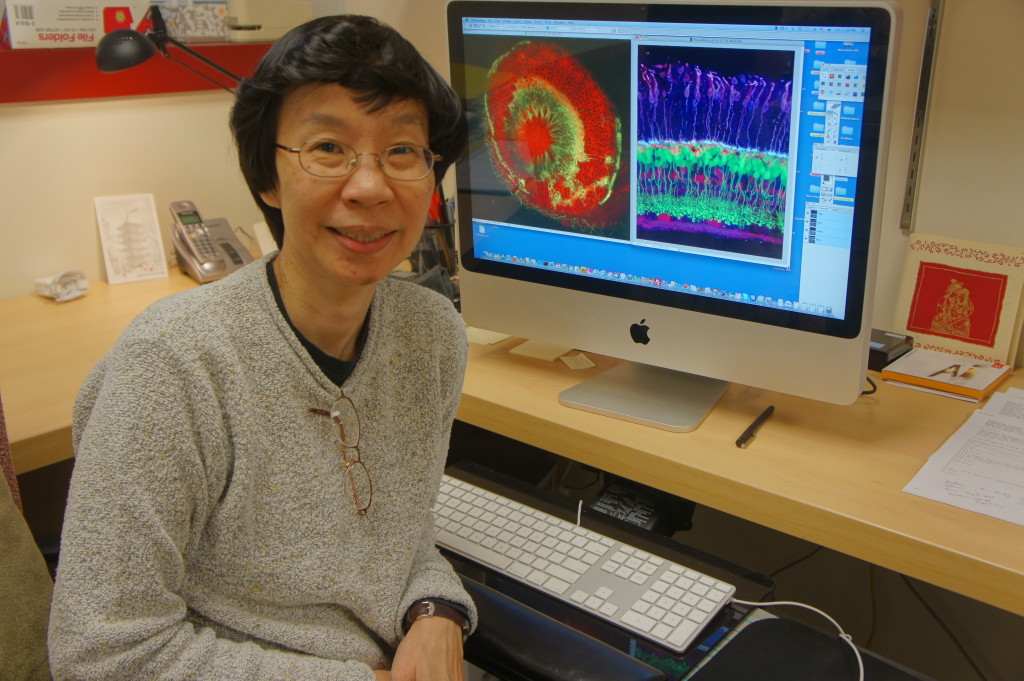Podcast: Play in new window | Download
Subscribe: Apple Podcasts | RSS
Dr. Rachel Wong is a Professor in the Department of Biological Structure at the University of Washington. She received her PhD in Vision Neuroscience from Australian National University. Afterward she served as a Research Associate at the National Vision Research Institute of Australia. Rachel then conducted postdoctoral research as a CJ Martin Fellow at Stanford University and then an RD Wright Fellow at the Vision, Touch, and Hearing Research Centre. She served on the faculty Washington University in St. Louis before joining the faculty at the University of Washington. In this interview, Rachel shares more about her life and science.
People Behind the Science Podcast Show Notes
Life Outside of Science
Rachel has a passion for music, and she is currently spending her free time learning to play the violin! She also likes to spend time with her lab members because they have become like family to her.
The Scientific Side
In her lab, Rachel is working to understand how neural circuits in the retina (the light-sensitive part of our eye) are assembled during our development and how they can be repaired or rewired in disease.
A Dose of Motivation
“Procrastination is the thief of time.” – Edward Young
What Got You Hooked on Science?
Rachel was always a curious kid. When she was in secondary school in Malaysia, she remembers bringing in random things to study under the microscope during her lunch break, especially things she would find in the creek near her house.
The Low Points: Failures and Challenges
Not getting the renewal of her first NIH grant was a devastating failure for Rachel. During this difficult time she was unsure if her career in science could go on. She tells us how she was able to get back on track and be successful.
A Shining Success!
Rachel really enjoys seeing a project come to fruition and writing the paper. She also is excited about supporting and training the next generation of scientists.
Book Recommendations
The No. 1 Ladies’ Detective Agency series by Alexander McCall Smith
Most Treasured Travel
A recent trip to Israel was really memorable for Rachel because considering the thousands of years of civilization that have come through cities like Jerusalem really provided her perspective on her life and science. The discoveries they have made are exciting but really small in the context of the history of mankind.
Quirky Traditions and Funny Memories
The Wong Lab loves to eat, and food is a big discussion topic for their group. Rachel and her lab members often go to dinner or cook together, as well as bring food in to share. One of her previous lab members taught them all how to make udon from scratch using some seemingly unconventional methods!
Advice For Us All
We should not be limited by our current knowledge or expertise.
Guest Bio
Rachael has been fascinated by microscopy ever since she was in secondary school in Malaysia. In high school, she became interested in Physics and Medicine, and moved to Australia for undergraduate studies where she obtained a B.Sc (Hons) in Physics in 1981. In her Honors year, Rachel had the opportunity to develop her own ‘interdisciplinary’ project, using X-ray and Neutron scattering methods to study the structure of blood cell membranes from patients with Muscular Dystrophy. She became totally enthralled by research and pursued graduate studies at the John Curtin School of Medical Research at the Australian National University, where she obtained a PhD in Vision Neuroscience in 1986. There, Rachel gained a passion for studying the development of the retina, the light sensitive part of our eye. After postgraduate studies at the National Vision Research Institute in Melbourne, she was supported by an NH&MRC C.J. Martin Fellowship at Stanford University. Rachel returned to the Vision, Touch and Hearing Research Center (University of Queensland) as an R.D. Wright Fellow. In 1994, she joined the faculty at the Department of Anatomy and Neurobiology, Washington University in St. Louis, until relocating to the Department of Biological Structure at the University of Washington, Seattle, in 2006. Throughout her career, she has applied and developed microscopy techniques to investigate the cellular behaviors and interactions that underlie the precise connectivity patterns of retinal neurons. Current efforts in Rachel’s lab are focused on elucidating how retinal cells can regain their proper circuitry after damage in disease.
This episode was originally published on November 12, 2014.

Leave a Reply